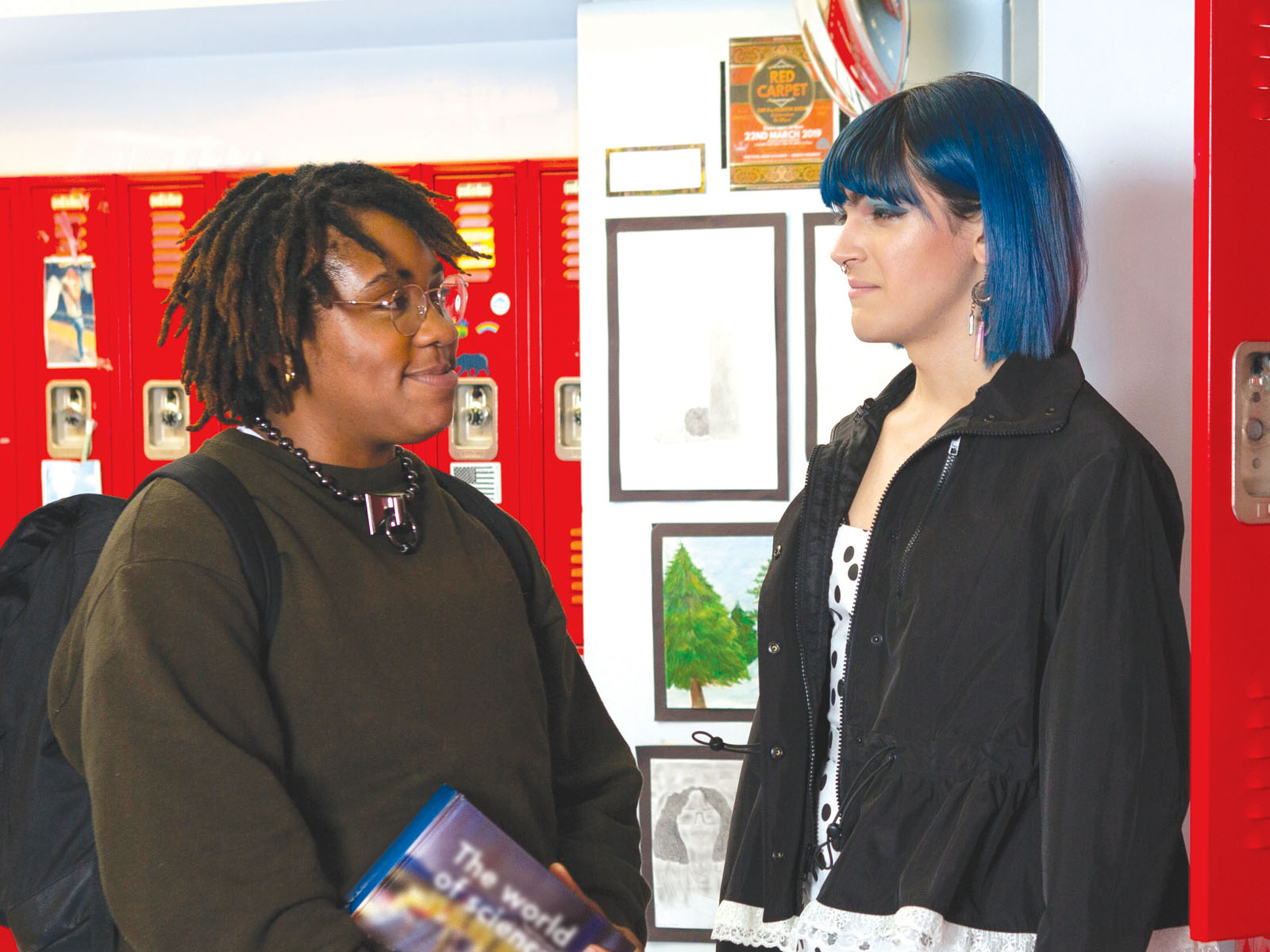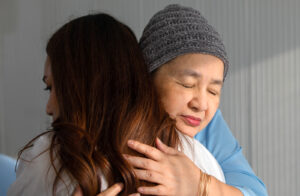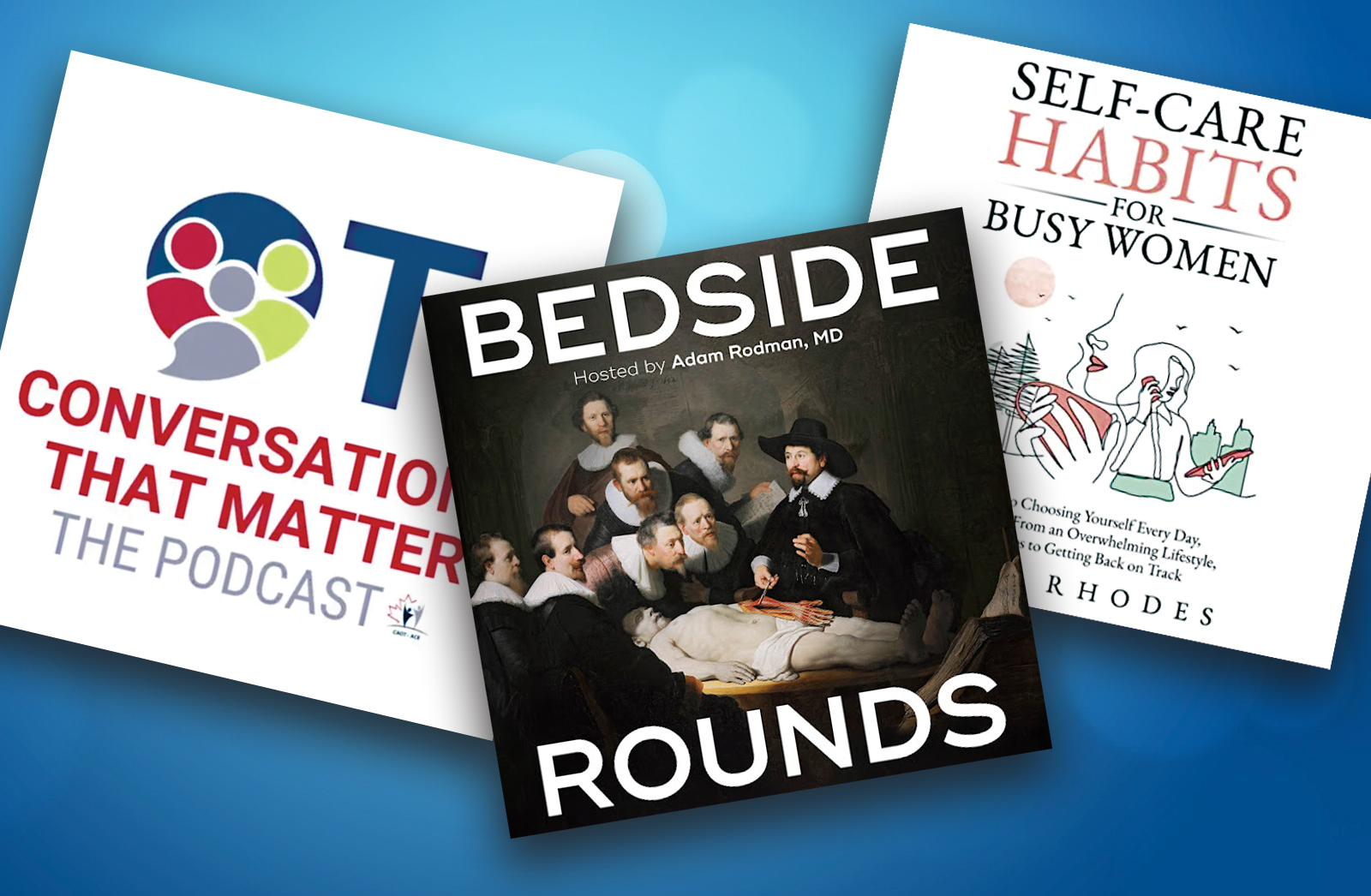Researchers can roughly project what autistic children’s lives will look like years down the road. But how good is their crystal ball—and what are its benefits?
By Elizabeth Svoboda
Kimberlee McCafferty knew something was different about her son Justin when he was just a baby. He had stopped babbling around his first birthday. He rarely accepted the food she offered or interacted with others, and his favourite pastime was spinning his toys across the wood floor. Before he turned two, Justin, who is now 18, was diagnosed with autism.
An autism specialist had examined Justin and rendered a sweeping judgment. “Your child will never speak or live independently,” the doctor told McCafferty flat out. His words dropped like an anvil, leaving McCafferty shaken. “I remember thinking, ‘That is a pretty damning statement to make when the child is not yet potty trained.’”
Specialists say families are right to be skeptical of such point-blank verdicts. Yet, researchers have assembled a rich body of data about how autistic people do over time and can provide certain kinds of nuanced projections. The data also points to subtle, early behavioural markers of future growth or difficulties in specific areas, as well as genetic variants that affect the arc of a child’s trajectory. Some of the research could help clinicians gauge an autistic child’s risk of having mental health challenges such as anxiety and depression as well.
Such forecasts can give families a general idea of how to plan for the years ahead. “No matter what the outcome is going to be, that unknown is really challenging for families,” says Anne Arnett, a child psychologist at the University of Washington in Seattle. “When you can take away the unknown, or at least give them some idea of what to expect over time, that can be an intervention in and of itself to help families prepare.” The predictions can also point clinicians to therapies that enable children to build on their strengths as they try to ease the children’s difficulties. “There is a lot of variability in brain growth, and it is really worth pursuing early interventions to try to support that brain growth,” Arnett says.
Separate ways
Children with autism “do not all fit one diagnostic ‘shape’ as they become adults,” University of Gothenburg psychiatrist Christopher Gillberg wrote in a 1991 paper. But early research was spotty, in part because diagnostic criteria for autism were not as clearly defined as they are today.
Research on the topic picked up in the 2000s, as teams conducted longitudinal studies and in-depth parent interviews to flesh out the details of autistic children’s development over time.
Drawing from larger samples, researchers then began to isolate distinct developmental tracks. In a landmark 2012 study, a research team used modeling software to find patterns in data from the clinical records of 6,975 autistic children registered with California’s Department of Developmental Services. The data included clinicians’ notes on the children’s social skills, communication and repetitive behaviour starting at around age three and spanning more than a decade. The researchers identified six groups, characterized by the children’s level of functioning: high, medium-high, medium, low-medium, low and bloomer. In the first five, children’s development at the time of diagnosis roughly predicted where they would end up at age 14. Those with strong social, cognitive and language skills early in life tended to show the most improvement in these areas, and those with the most limited skills to start made the least progress. But the bloomers were different, according to study investigator Christine Fountain, a sociologist at Fordham University in New York City. Children on this trajectory—about 10 per cent of the study’s participants—initially had pronounced autism traits such as repetitive behaviours and social difficulties, though generally not intellectual disability. With help from their parents, who were often highly educated and motivated to get them the best therapies, they took great leaps forward in social and educational achievement.
In 2015, another group of researchers identified two sets of trajectories—defined by either autism traits or life skills—among 421 autistic children, whom they followed from age two, three or four to age six. Like Fountain’s groups, the children who started out with the best skills generally showed the most improvement. About 11 per cent had mild autism traits that gradually eased over time, and the remaining 89 per cent had more pronounced traits that stayed relatively stable. When the researchers looked at “adaptive skills,” or life skills, such as getting dressed, grooming or crossing the street safely, they similarly found that children who started at a low skill level tended to decline (29 per cent), those with moderate skills stayed stable (50 per cent) and those with strong life skills tended to improve (21 per cent).
The researchers found two groups of children who showed significant progress: The 21 per cent who improved in adaptive functioning and the 11 per cent whose autism traits steadily declined. A child’s level of autism traits was not always predictive of their life-skills path, however, says study investigator Stelios Georgiades, an epidemiologist at McMaster University in Hamilton, Ontario. Some children with pronounced repetitive behaviours, for example, developed strong adaptive skills as they grew. “No single child can be described or characterized using one domain,” Georgiades says.
Drawing on large studies like these as well as their own clinical experience, neurologist Gary Stobbe of Seattle Children’s Autism Center in Washington and his colleagues have sketched out three long-term trajectories for autistic children. At one extreme, which the clinicians call “optimal outcome,” children progress to the extent that they no longer meet the diagnostic criteria for autism by young adulthood. The autism traits of these children tend to be mild from the get-go, and they show a relatively high degree of cognitive and motor functioning from an early age.
Children on the second trajectory are like those in the “medium’ or ‘moderate” study groups. They represent the majority of autistic children, making steady progress in therapy and racking up developmental milestones from year to year. Though these children show signs of autism throughout their lives, these signs diminish over time for many of them, even into adulthood. “Those individuals will often progress in their 20s from all of the work that is been done in the earlier years,” Stobbe says. The remaining children continue to show significant autism traits, he says. They need support to complete daily tasks and are typically unable to live independently, often requiring constant supervision. Trajectory assignments like these are never absolute, however, as some autistic children jump from one to another in mid-to-late childhood, Stobbe says.
Early indicators
A growing array of studies adds detail to this picture, identifying clues to which general trajectory a child is likely to follow. Early social skills are emerging as one reliable indicator. Harold Doherty of Fredericton, New Brunswick, says that when his autistic son Conor was a toddler, he did not respond much to attention from his parents or show interest in social games such as peek-a-boo.
Some research suggests that children like Conor who lack social gestures are likely to have pronounced autism traits later on and follow a lower skill trajectory. In a 2017 study of 199 autistic toddlers and preschoolers, researchers found that the children who made few social-communicative gestures, such as pointing and imitating adults, at the start of the study had the most severe autism traits a year later. These social behaviours predicted autism severity better than repetitive behaviours or living skills, the researchers found. Conor, now 25, speaks few words, has occasional meltdowns and requires around-the-clock supervision. “That is something parents should be aware of, that their child may well have to live with care and assistance,” Doherty says.
Conversely, children whose autism traits diminish tend to be relatively social early on: In a 2020 study, toddlers who sought out social interactions and showed good pointing skills (to indicate objects) ended up with only mild autism traits as adolescents.
Early intellectual ability and adaptive behaviours
In Fountain’s study, autistic children who had intellectual disability (defined as having an intelligence quotient below 70) as toddlers were likely to show substantial difficulties both socially and academically through the age of 14. On the other hand, children such as Fountain’s bloomers—who show substantial easing of autism traits and advances in life skills—tend to be those without intellectual disability, experts say. Adaptive behaviours also correlate with future academic success. In a 2020 study, researchers analyzed records for 98 autistic adults from a longitudinal study in which clinicians had evaluated their daily living and other skills from ages 2 to 26. Using modeling software, the researchers divided the participants into two groups, with either low or high daily living skills. Children in the high-skills group were more likely than those in the low-skills group to continue their education after high school, according to lead researcher Catherine Lord, a psychologist at the University of California, Los Angeles. Basic skills development can foster creative thinking and learning, she says. One autistic boy Lord met was having trouble staying seated. But when therapists helped him to sit for longer periods, he was able to delve deeper into his artistic interests. “He turned out to build beautiful block designs,” Lord says. “Where we want to get is the block designs, not the sitting.”
Socioeconomic status matters, too. Low-income and minority children with autism tend to have less developed communication and adaptive skills in young adulthood than autistic children from more privileged backgrounds, according to a 2019 Drexel University report. Low-income children may have minimal exposure to early-intervention programs to address speech, motor and other difficulties. Family participation in these programs predicts “longer-term outcome during adolescence and adulthood,” Kim says. “That really speaks to the importance of parent involvement,” as well as ease of access to these programs.
Genetics may also provide clues to a child’s future. About one-quarter of children with autism have a genetic variant linked to autism, and some of these give rise to characteristic developmental paths. Last September, Arnett and her colleagues released the first report of early predictors of cognitive and adaptive skills in people who have a mutation in one of five genes associated with autism: ADNP, CHD8, DYRK1A, GRIN2B or SCN2A. They analyzed data from 65 people with one of these variants, aged five to 21, who are part of a larger ongoing study, The Investigation of Genetic Exome Research at the University of Washington in Seattle. The scientists assessed each person’s skill level and combined that data with families’ recollections about when these children had hit early milestones such as walking and talking.
Genetics provides but one clue
The team found that the children’s developmental course depends on the genetic variant they carry. Children with an ADNP variant show significant motor delays almost across the board, generally not walking until 20 months or later. However, the earlier they do walk, the higher their scores on nonverbal IQ tests in childhood (ages 4 to 16) and young adulthood. In children with a CHD8 variant, early milestones do not predict their cognitive development as reliably. But the earlier they speak in phrases (whether at age one or four, for example) the better their adaptive skills are likely to be in later childhood and young adulthood. And the earlier children with a DYRK1A variant speak their first words, the more likely they are to improve their scores on verbal IQ tests as they grow older.
Arnett and other researchers plan to study larger groups of children with these variants and to expand their work to other genes linked to autism, of which there are now more than 100.
Measuring up
Little is known about how autism mutations affect the emergence of other mental health conditions associated with autism, but a growing body of data links an autism diagnosis with mental health outcomes. Lord and her colleagues have spent years tracking depression, anxiety and traits of attention deficit hyperactivity disorder (ADHD) in children and young adults with autism. They aim to alert families to signs of trouble so the children can be treated before more serious issues develop.
Other researchers have found ways to flag those most likely to have persistent anxiety. University of Toronto psychiatrist Danielle Baribeau had long noticed that autistic children who are unusually insistent on routines seemed prone to full blown clinical anxiety as they grew older. So Baribeau and her colleagues tested 421 autistic children for signs of anxiety once a year for eight years, starting at age three. They measured the children’s insistence on routines three times during the same period. In July 2020, the researchers reported that 95 per cent of young children with high “insistence on sameness” had significant anxiety by elementary school. “If you have a kid who is really rigid and ‘sticky,’ in particular when they are three or four, keep that kid on your radar,” Baribeau says.
But good adaptive skills at age nine seemed to protect children against serious anxiety or other mental health problems as young adults, Lord also found. Feeling capable at an early age, Lord says, is a cornerstone of future psychological health. “Parents of older children and adults say, ‘I just want my kid to be happy,’” Lord says. But being happy often goes hand in hand with having a sense of responsibility and independence.
More vulnerable?
On the flip side, children with stronger social and cognitive skills may be more vulnerable to certain kinds of mental health challenges, Stobbe says. In his experience, they are often the ones who suffer most from anxiety, depression and related conditions, perhaps because they are keenly aware when others ostracize them or perceive them as different. “A kid that is doing really well,” Stobbe says, “[is] at a higher risk for bullying or developing a co-occurring mental health [condition] like depression.” In a 2010 study of 50 autistic children aged 9 to 16 who scored a “high” on a test of global function, 74 per cent had a co-occurring psychiatric condition such as depression, anxiety or a behavioural disorder.
Plenty of uncertainty dogs all such predictions, however. McCafferty’s younger son Zach—who also has autism—is a bloomer. Zach was barely speaking after a severe regression in toddlerhood, and he started preschool in a special-education class. But he thrived in elementary school, transitioned into mainstream classes and joined his middle-school honour society. Now a middle-school graduate, he spends hours replying to text volleys from friends. Zach’s story, McCafferty says, underscores the limits of predicting a child’s path. “No one can tell what they are going to be like in one year, much less 10.”
A lot of the uncertainty arises from the fact that what families do can make a real difference, Lord says. Customized therapy may help children defy dour forecasts. “Based on the child’s profile, clinicians might suggest, ‘This child needs more structured, tabletop therapy to hone certain skills.’ If the child is talking very well, more naturalistic, peer-based intervention might be better,” Kim says. Zach’s therapists recommended floor time, in which his parents got down on the rug with him, bolstering his social skills by engaging with him in activities such as sensory play with shaving cream.
How do we track progress?
Aside from uncertainty about development, plotting a trajectory is difficult for a conceptual reason: measurement. What should be the measure of progress? Standard measures include scores on IQ tests and on behavioural and social-skills assessments. But people conceive of success differently. Some define it as independence in adulthood or an easing of autism traits. Others set specific academic or social goals, such as pursuing higher education or maintaining close, supportive relationships. “It really could be doing jigsaw puzzles. It could be playing chess. It could be playing a video game,” Lord says. “It could be cooking, making sushi.” Discovering the ideal trajectory for each child may mean figuring out what course the child wants to chart, rather than the one their family envisions.
It is important that all this uncertainty be part of the clinical picture, experts and families say. Dire predictions that sound like they are set in stone can sap families’ motivation to seek the best support. “Especially in the early years,” McCafferty says, “[you need to] be able to channel all your energy and harness all your internal resources, to attack everything from sleep to eating, to potty training, to going in the car, to being in public. You need your energy. You need your hope for that.”
There almost always is hope, even for children who need a lot of support. At 18, Justin still has severe autism, speaks few words, and is not likely to be able to live on his own. But Justin exceeded expectations in important ways. He can communicate by typing words and symbols on his iPad to convey things such as who he wants to see or what he would like to eat. He also reads at a first-grade level and knows how to do a Google search to learn about topics that pique his interest. He feels more comfortable going out in public now than he did years ago, and he can navigate large crowds at amusement parks with ease. To the McCaffertys, Justin’s progress shows that no matter how good the science is, no one’s life course is—or should be—perfectly predictable.
Elizabeth Svoboda is a writer with an interest in dinosaur track-based detective work, creationist biology classes in Galapagos schools, and the connections between suffering and selflessness.
Reprinted with permission from spectrumnews.org.














